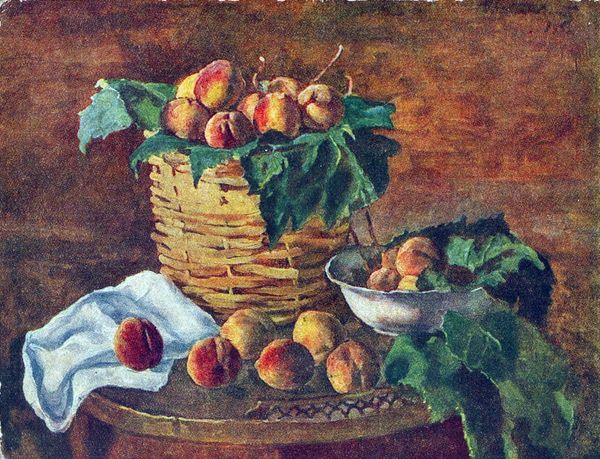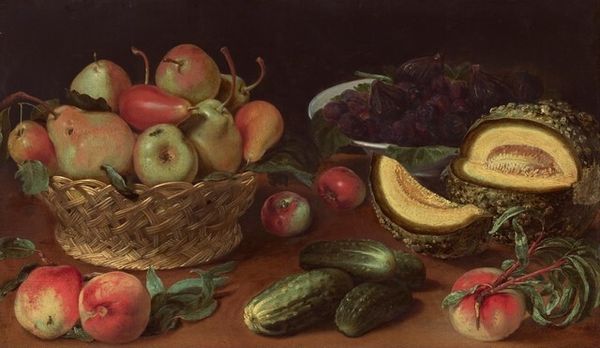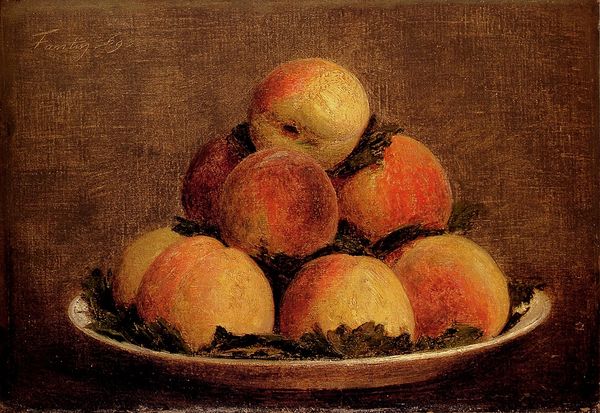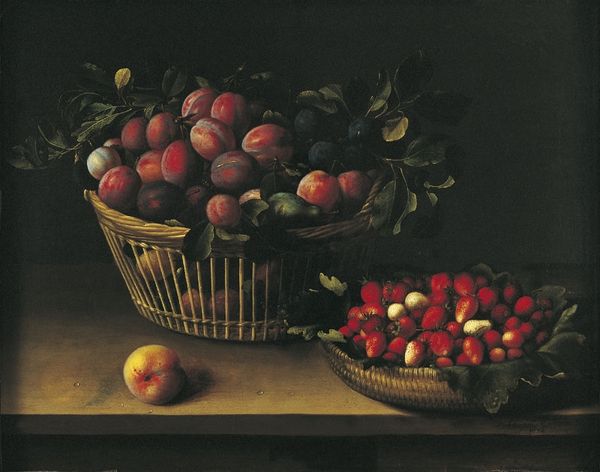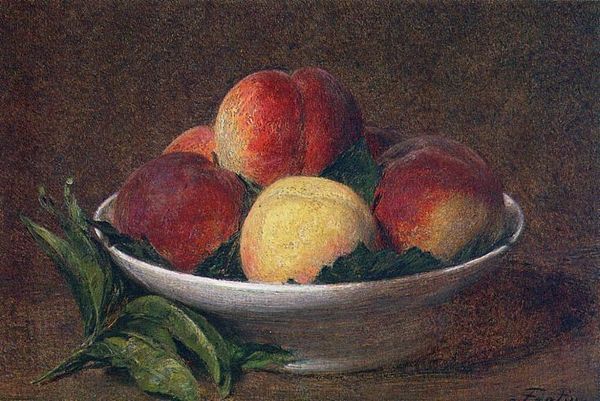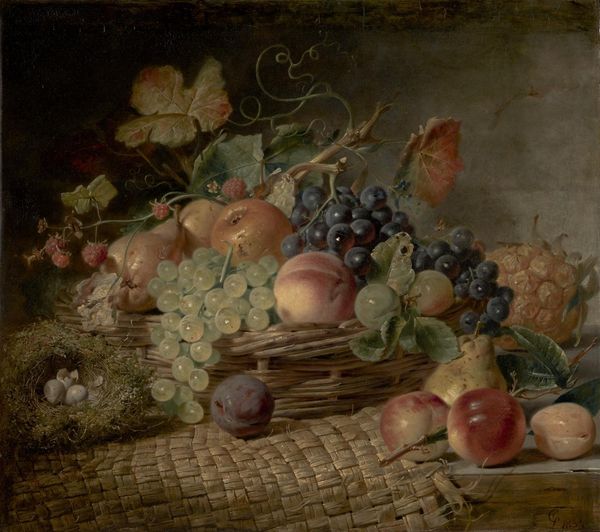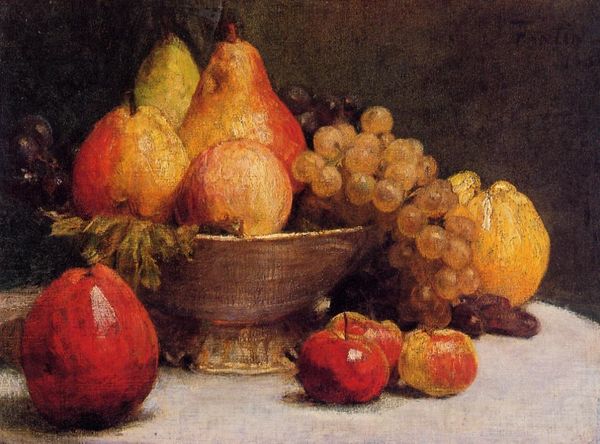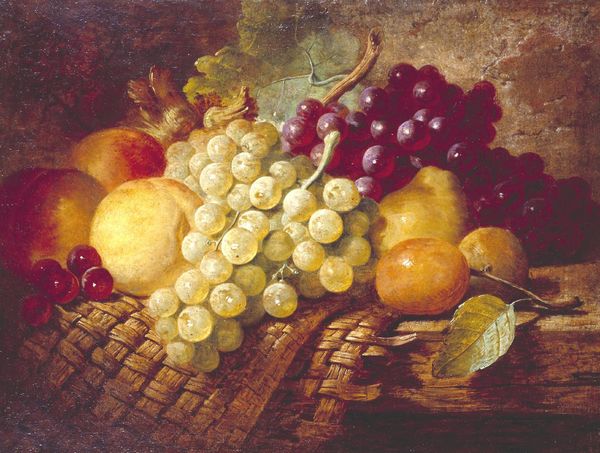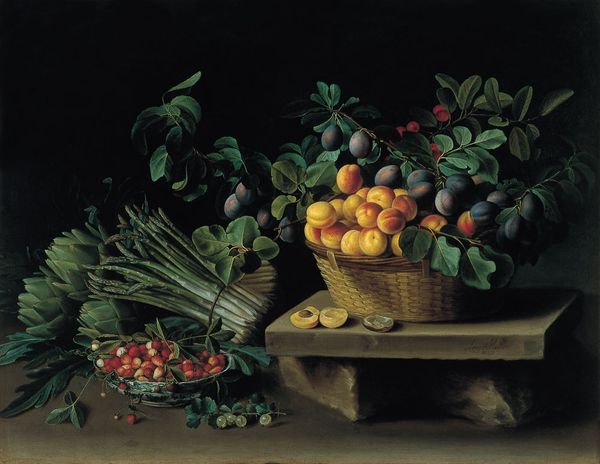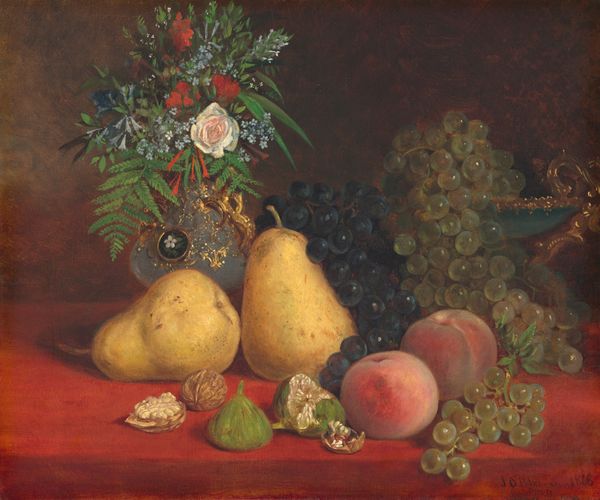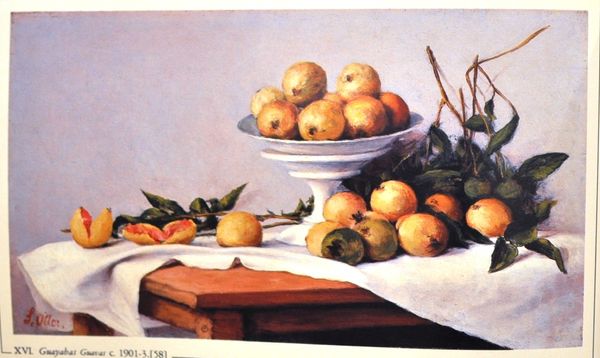
Copyright: Public Domain: Artvee
Editor: So, this is Henri Fantin-Latour's "Nature morte aux prunes," painted in 1886 using oil on canvas. It has a certain muted quality, like the colors have been softened almost to a whisper. The arrangement seems so carefully constructed, it feels… intentional. What strikes you about this still life? Curator: The formal organization is indeed striking. Observe how Fantin-Latour has structured the composition around a central, overflowing bowl, a classic compositional tool used to focus the viewer's gaze. The plums cascade, almost theatrically, across the foreground. Note the color palette; a deliberate orchestration of reds, purples, and muted greens set against the somber background, creating a balanced chromatic unity. The light, diffused and even, sculpts each plum, highlighting its form. Does the lack of a strong light source contribute to the painting's serene and almost timeless quality? Editor: Yes, absolutely! It's very controlled. I noticed the leaves trailing casually – it breaks the roundness of the plums, yet the coloring keeps it harmonious. Is the even lighting something you would see within Impressionism and Romanticism styles? Curator: Precisely. The Romanticists used similar compositional ideas and chromatic unity, but the Impressionists were keen on brushstroke, to define what they saw, their interpretation. While the smooth handling of paint doesn’t show overt brushstrokes, suggesting perhaps an academic influence in the execution, or is Fantin-Latour rather searching a personal dialogue with the classical tradition, filtering it through his sensitivity? Editor: That makes me consider what's included in the image – and, perhaps more importantly, what's excluded. There are no extraneous details. Everything serves the formal arrangement. Curator: Exactly! Every element contributes to the structural integrity of the composition, thus emphasizing the painting’s pictorial unity. A carefully constructed exercise in form and colour, rather than an invitation to partake. Editor: This exercise really sharpens your perspective, focusing on what makes the piece work visually. Curator: Agreed. Close observation is key. We gain insights to understand formal and critical art analysis.
Comments
No comments
Be the first to comment and join the conversation on the ultimate creative platform.
